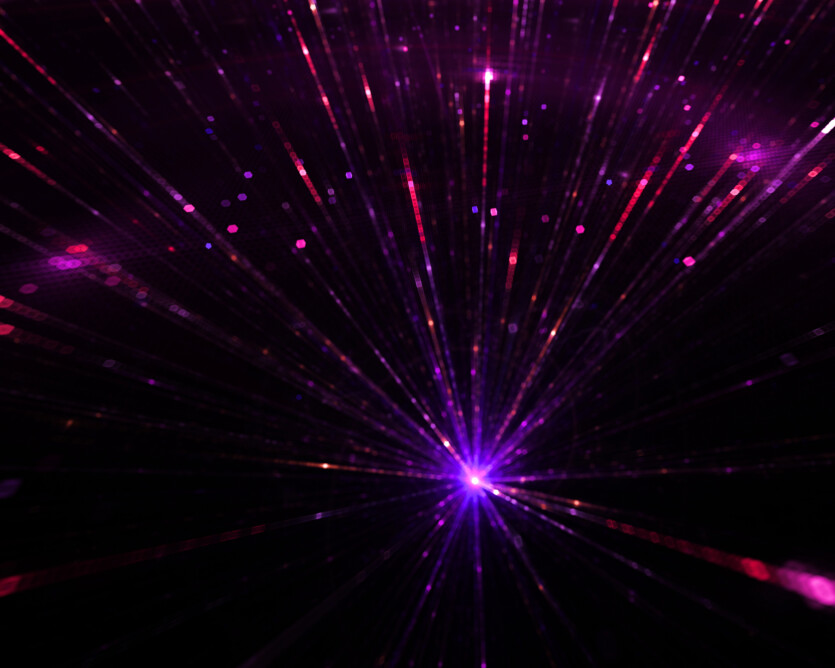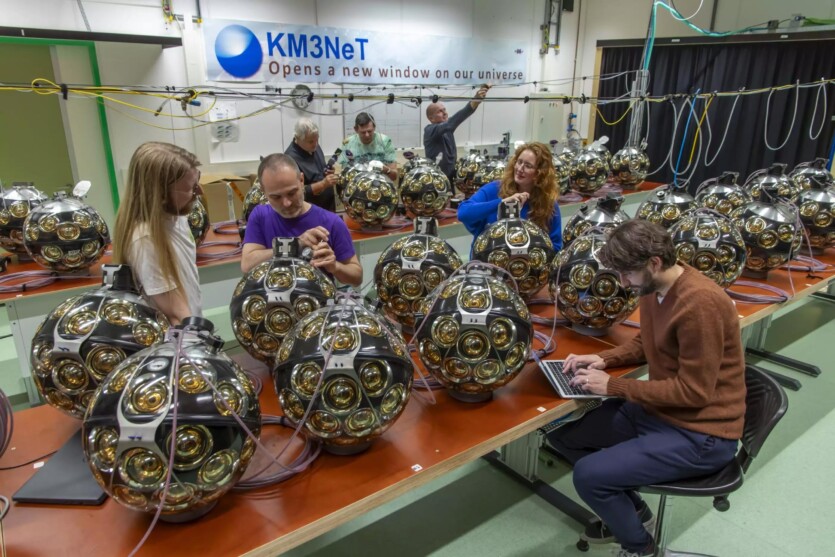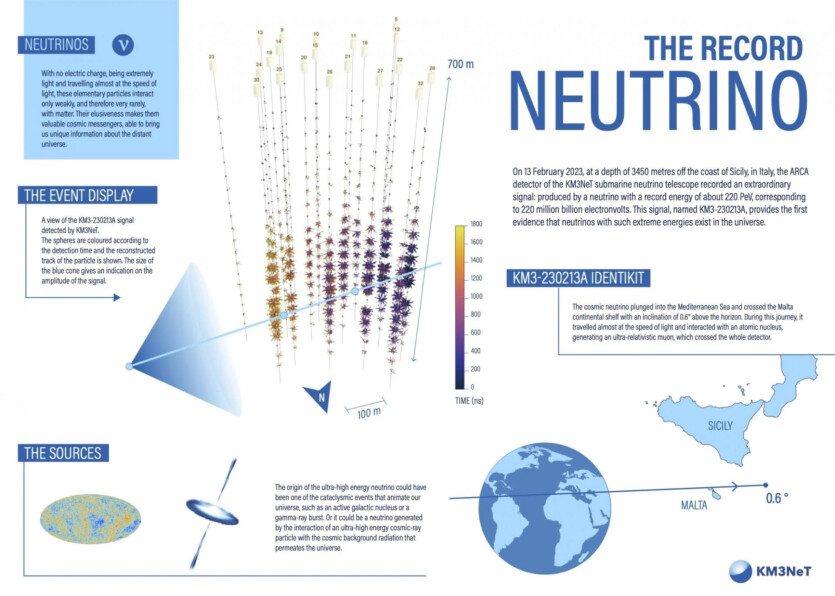
An international team of scientists using the KM3NeT underwater telescope managed to detect a high-energy neutrino.
The recorded signal from the neutrino was 16 thousand times higher than the energy of the most powerful particle collisions in the Large Hadron Collider. The signal was recorded on February 13, 2023. The KM3NeT deep-sea observatory is located at the bottom of the Mediterranean Sea and uses seawater as a medium for detecting high-energy neutrinos.
Neutrinos are very difficult to detect because they have almost no mass and do not carry electric charges, and rarely interact with ordinary matter. When neutrinos interact with the nuclei of atoms in water, they can create muons with a negative charge. The muon moves so fast that it creates a cone of light known as Cherenkov radiation, similar to the sonic boom that creates a supersonic jet.

Thousands of sensors of the KM3NeT neutrino telescope, placed at a depth of 3,450 meters, are designed to detect this radiation. The telescope consists of 230 vertical strings that hold 18 spherical optical modules. Inside each module are 31 photomultiplier tubes that amplify even the faintest flashes of light from all directions These tools allow scientists to track elusive neutrinos and uncover their origin.
«By adding observations from other telescopes, we aim to link cosmic ray acceleration, neutrino production, and the role of supermassive black holes in shaping these energetic phenomena», — emphasize physicists from Institute of Radio Astronomy of the Max Planck Society.
In addition to supermassive black holes, supernova explosions may be involved in the production of neutrinos. The detected high-energy neutrino could have originated from one of these sources, or it could be the first cosmic neutrino detected. Such cosmic neutrinos can be formed as a result of the interaction of other cosmic particles with the weak light of relic radiation. The modules of the KM3NeT telescope recorded that the neutrino energy must have been hundreds of peta-electron volts. For comparison, the previous record energy performance neutrinos were about a few TeV.

KM3NeT includes two deep-sea neutrino detectors: ARCA (Astroparticle Research with Cosmics in the Abyss) off the coast of Sicily, and ORCA (Oscillation Research with Cosmics in the Abyss), near Toulon, France ARCA is designed to study high-energy neutrinos and consists of 230 vertical detector blocks, each about 700 meters high and spaced 100 meters apart. ORCA, optimized for studying the properties of neutrinos, has 115 blocks, each 200 meters high. Data from both detectors are transmitted via submarine cables to shore stations: INFN Laboratori Nazionale del Sud in Portopalo di Capo Passero, Italy, and Laboratoire Sous-marin Provence Méditerranée in La Seyne-sur-Mer, France.
Neutrinos are a unique tool for exploring deep space. Various events occur in the Universe on a very large scale, including incredible explosions, shock waves, catastrophic absorption of matter by black holes, and other cataclysms. These events can to endow particles with incredible energies. The energy of the accelerators created by humans is many times higher than that of the accelerators created by humans.
Some of these particles are unstable and give rise to photons or neutrinos when they decay. As a result, particles of ultra-high energy and different types are scattered throughout the Universe, carrying information about what happened in this corner of space. Some of the particles reach the Earth and can be registered, but the information is often inaccurate. Charged particles can be deflected by magnetic fields in our galaxy and in intergalactic space. Such particles are detected by cosmic ray detectors, but their direction no longer indicates their origin.
High-energy photons — gamma rays — are free from this drawback; they travel straight and point in the direction of the source. However, gamma rays are absorbed by gas and dust clouds in the Galaxy or scattered in their intergalactic journey — and as a result, we simply do not see distant sources, gamma rays from them do not reach us And cosmic neutrinos are free from both of these drawbacks: they fly in a straight line and are practically not blocked by anything.
Neutrinos — former black holes? Scientists find traces of Hawking radiation for the first time
The results of the study are published in the journal Nature
Source: SkiTechDaily

Spelling error report
The following text will be sent to our editors: